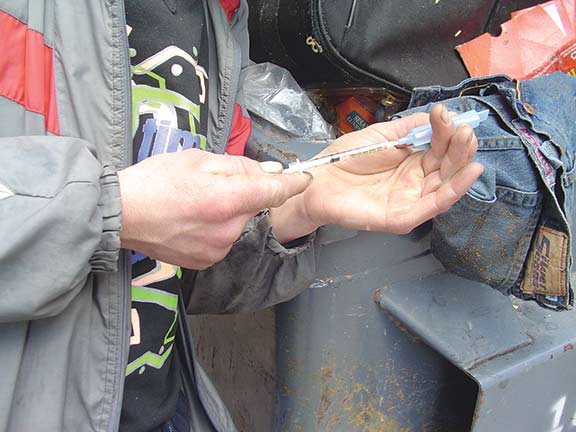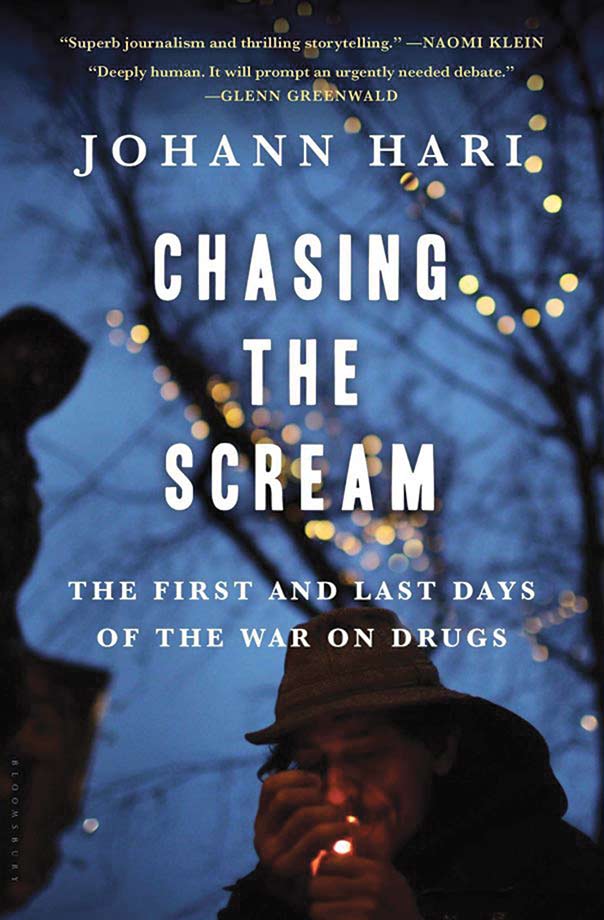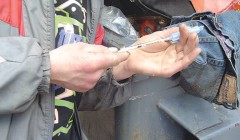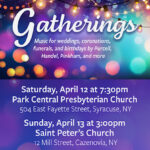Let’s Talk
Addiction specialists, public officials and the families of addicts confronting rising heroin addiction suggest that Central New York needs more treatment facilities and better physician training regarding opioids.  In other news, in an effort to address postpartum depression, a local OBG practitioner has begun meeting with patients in groups so the patients themselves can discuss their symptoms, coping mechanisms and find that they are not alone.
In other news, in an effort to address postpartum depression, a local OBG practitioner has begun meeting with patients in groups so the patients themselves can discuss their symptoms, coping mechanisms and find that they are not alone.
Communication is a start.
Community-based conversations provide forums where people can voice individual perspectives and experiences with conditions ranging from chronic pain to depression. The reality is people are not always ready to speak openly in the same ways or at the same time. Unfortunately, people seeking help with coping problems or substance issues too often find themselves viewed solely in terms of those problems rather than as whole persons seeking help with one facet of their multifaceted lives. Once labeled with a problem, the “identified patient” often becomes the scapegoat for problems shared by family and community around them. After all, if an individual among many admits to needing help, that person must be the one with the problem. Case closed, right? It is enough to make one seek therapy.
I experience anxiety. My anxiety at times compels me to talk too much, which creates more anxiety, an anxiety likely rooted in early traumas and brain injuries I could not understand and about which I could not talk. I’ve done my research. I recommend Edmund Bourne’s “The Anxiety and Phobia Workbook,” which addresses substances including food.
Let’s talk.
Different parts of the brain work together through the senses for overall health. Stroke, concussion, environmental stress, drugs, excessive alcohol, and lack of sleep can injure brain and mind-body connections. Brain injuries limit the ability to build up a reservoir of useful cognitive tools. Misused, narcotics and some psychiatric drugs alter neural connections resulting in the inability to sense danger, filter environmental stimuli, and assertively navigate interpersonal relationships. There are many books and websites devoted to how brains, bodies and chemicals interact. We are chemical beings bonded together in a chemical world.
Opium is a powerful and useful pain reliever. According to Wikipedia, opium use dates back to 5000 BC. In the 1800’s, to those who could afford it, American physicians and entrepreneurs offered pain relief, sound sleep and overall well-being in laudanum, an alcohol/opium tincture combination no one suspected was as addictive as it was. Physicians prescribed laudanum to women for pain from cramps, childbirth and postpartum distress. Laudanum users did not aspire to be addicts. Addicts rarely do.
Traditionally society has been quick to look down on the poorest substance abusers. Maybe that will change. Current research such as the Aversive Childhood Experiences Studies, ACES, trace many health problems, including substance abuse, back to undiagnosed, untreated and unexamined childhood injuries and trauma. I am not an addiction counselor, but it seems to me that programs intended to heal addicts should address the whole person, taking into account environmental stress, interpersonal safety concerns and family history. Such treatment should be non-judgmental. Addiction is generally a symptom of something before it becomes the primary problem. Active addiction occurs in some context.
OK. Enough about that.
More than a few books on addiction suggest addiction is so powerful that rats will walk across electrified screens
 to get to drug laced water. Other studies suggest caged rats will choose drug laced water over food. Such studies rarely address the reality that caged rats allowed relief only if they walk across electrified screens are trauma victims, and like human trauma victims, are very likely to self-medicate their pain. In his book about addiction, “Chasing the Scream,” writer Johann Hari describes an experiment conducted by researcher Bruce Alexander. Professor Alexander created an environmentally rich “rat park,” providing his rats with food, toys, space, companion rats of both sexes, and, drug laced water. The rats ignored the drugs. Professor Alexander then went further taking a caged- I say traumatized- drug-addicted rat and released the addicted/traumatized rat into the rat park. Left to its own devices and with multiple healthy options, the rat chose food, companionship and play over the readily available drug-water.
to get to drug laced water. Other studies suggest caged rats will choose drug laced water over food. Such studies rarely address the reality that caged rats allowed relief only if they walk across electrified screens are trauma victims, and like human trauma victims, are very likely to self-medicate their pain. In his book about addiction, “Chasing the Scream,” writer Johann Hari describes an experiment conducted by researcher Bruce Alexander. Professor Alexander created an environmentally rich “rat park,” providing his rats with food, toys, space, companion rats of both sexes, and, drug laced water. The rats ignored the drugs. Professor Alexander then went further taking a caged- I say traumatized- drug-addicted rat and released the addicted/traumatized rat into the rat park. Left to its own devices and with multiple healthy options, the rat chose food, companionship and play over the readily available drug-water.
Johann Hari and Bruce Alexander also state what should be obvious: most people suffering broken bones or recovering from surgery take opioids as directed for as long as they need pain relief. Addiction is the exception, not the rule.
Kierkegaard said, “Life can only be understood backwards but must be lived forwards.” There is cause and effect involved in any journey from birth to addiction. It helps to explore that journey and when you’re ready, talk.











